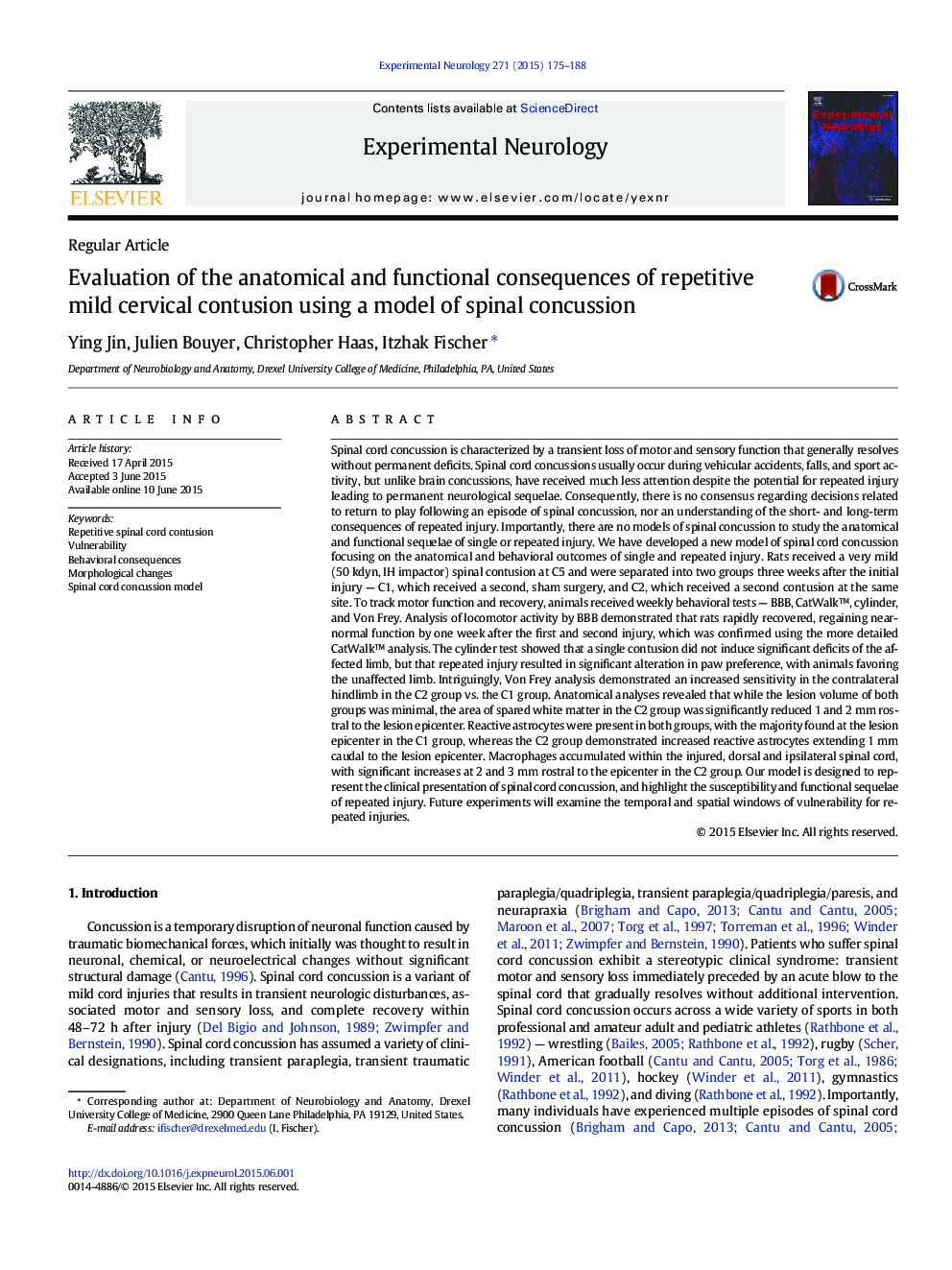| کد مقاله | کد نشریه | سال انتشار | مقاله انگلیسی | نسخه تمام متن |
|---|---|---|---|---|
| 6017234 | 1580162 | 2015 | 14 صفحه PDF | دانلود رایگان |
- We describe a novel animal model of mild contusion that mimics cervical spinal concussion.
- This injury shows a rapid and full recovery within a week.
- However, repeated injury induces significant and long-term functional deficits and inflammation.
- Our study highlights the vulnerability of the spinal cord to repeated concussions for clinical considerations.
Spinal cord concussion is characterized by a transient loss of motor and sensory function that generally resolves without permanent deficits. Spinal cord concussions usually occur during vehicular accidents, falls, and sport activity, but unlike brain concussions, have received much less attention despite the potential for repeated injury leading to permanent neurological sequelae. Consequently, there is no consensus regarding decisions related to return to play following an episode of spinal concussion, nor an understanding of the short- and long-term consequences of repeated injury. Importantly, there are no models of spinal concussion to study the anatomical and functional sequelae of single or repeated injury. We have developed a new model of spinal cord concussion focusing on the anatomical and behavioral outcomes of single and repeated injury. Rats received a very mild (50 kdyn, IH impactor) spinal contusion at C5 and were separated into two groups three weeks after the initial injury - C1, which received a second, sham surgery, and C2, which received a second contusion at the same site. To track motor function and recovery, animals received weekly behavioral tests - BBB, CatWalkâ¢, cylinder, and Von Frey. Analysis of locomotor activity by BBB demonstrated that rats rapidly recovered, regaining near-normal function by one week after the first and second injury, which was confirmed using the more detailed CatWalk⢠analysis. The cylinder test showed that a single contusion did not induce significant deficits of the affected limb, but that repeated injury resulted in significant alteration in paw preference, with animals favoring the unaffected limb. Intriguingly, Von Frey analysis demonstrated an increased sensitivity in the contralateral hindlimb in the C2 group vs. the C1 group. Anatomical analyses revealed that while the lesion volume of both groups was minimal, the area of spared white matter in the C2 group was significantly reduced 1 and 2 mm rostral to the lesion epicenter. Reactive astrocytes were present in both groups, with the majority found at the lesion epicenter in the C1 group, whereas the C2 group demonstrated increased reactive astrocytes extending 1 mm caudal to the lesion epicenter. Macrophages accumulated within the injured, dorsal and ipsilateral spinal cord, with significant increases at 2 and 3 mm rostral to the epicenter in the C2 group. Our model is designed to represent the clinical presentation of spinal cord concussion, and highlight the susceptibility and functional sequelae of repeated injury. Future experiments will examine the temporal and spatial windows of vulnerability for repeated injuries.
Journal: Experimental Neurology - Volume 271, September 2015, Pages 175-188
